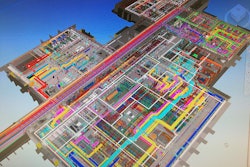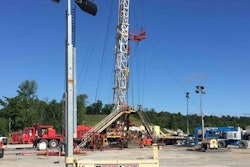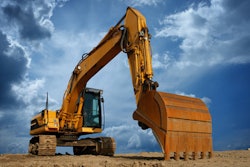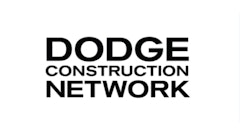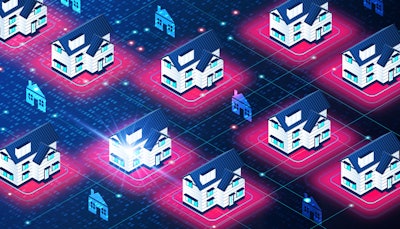
It was 50 years ago when we were all invited to experience a world dreamt, designed, and built by Walt Disney. If you’ve ever been to his Walt Disney World park you may have enjoyed the Carousel of Progress, a rotating theater taking you back to the technological achievements enjoyed by a 1900s-era, animatronic family before transporting you to the same family, experiencing ultramodern, everyday conveniences. What Disney portrays as the future is fast catching up with reality. Today, planners, designers, and builders benefit from powerful tools that are accelerating the existence of modern living spaces with innovation at its core.
Today, we call this “proptech” (property technology), which defines a range of technologies that are enhancing living spaces such as security systems, communications networks, AI-enhanced databases, property management systems, entertainment setups, and more. As a market opportunity, proptech has a projected CAGR of 16.8% and as its benefits are further realized, across a range of building types, demand for it will fuel its growth. Indeed, proptech has the ability to transform our industry and decision makers in construction and real estate are taking notice.
Early Planning Around PropTech Plans is Essential
Despite its promise, the process by which technology flows into a building project is often overlooked—to the detriment of builders and future occupants alike. Today’s culprits are often compressed project lead times and lower budgets. Most often, if technology is considered before construction, it occurs after the building floor plans are already defined, which then limits bandwidth, coverage, cabling runs, access control, or security systems. The secret to managing technology and ensuring that future demands are met lies in careful preparation, early in the design cycle.
Building a new property, multifamily complex or mixed-use development involves technology complexity with an average of over 30 systems, many of which need to interoperate. Therefore, the best time for a developer to involve a proptech partner is actually during the project’s schematic design phase and budget formulation. Waiting will only hinder a thoughtful proptech plan and disrupt the project’s schedule and budget. Engaging a proptech partner with design capabilities early in the planning phase of the project provides an enormous opportunity to optimize the infrastructure of the building and the performance of the systems.
Architects can partner with full proptech providers to deliver uniform and well-thought-out designs that will deliver on an integrated, scalable ecosystem for all technologies. Engaging proptech partners early also allows for consideration of the latest technology trends, system requirements and future demands to ensure maximum performance of that particular building.
Challenges are Introduced in Late-Stage Proptech Plans
Until the walls are closed up in the building process, there is still time to integrate the best-fitting proptech infrastructure. However, once the sheet rock has been laid in from floor to ceiling, it does become difficult and costly to retrofit, with extra labor and effort needed in the construction process. For this reason, early intervention in the design and planning process creates a much better environment to avoid cost overruns or scope creep in the project.
Similarly, planners should thoughtfully consider the terms of the telecom or data services agreements for the building units. Carrier-provided service agreements are flat and can impair connectivity. It creates an extra burden of purpose-building separate and distinct networks to support security systems or back office Wi-Fi. To increase efficiency, buildings should operate on converged networks, which also require a measure of advanced planning.
Compliance Considerations are Consequential
Proactive planners must consider local laws and building codes when integrating proptech into the building design. Consideration must be given to a variety of different aspects:
- Cabling. The cabling must be dressed and fire blocked. Construction permits are important to ensuring it meets a line of standards.
- Rack placement. Other compliance standards address where racks can and cannot be placed. In many instances, racks must maintain a certain clearance from specific areas such as an electrical transformer.
- Elevator transformers. Telecommunications closets are often co-located in the elevator closet. With the involvement of high-power electric distribution panels, however, you must obtain clearance for that placement.
- Information security. If the property is a mixed use development, planning for physical network security to comply with the Payment Card Industry Data Security Standard (PCI) will be important. PCI is an information security standard used to handle customer credit card data. Designing trackable access control to any locations where networking equipment is housed, commonly known as the “MDF” or “IDF” will help the property maintain physical network security. Regardless of whether a building is aiming to achieve PCI compliance, it is best practice to build in some level of trackable security to protect access to electrical and digital infrastructures.
ESG Compliance is Becoming Increasingly Influential
Environmental, social and governance (ESG) standards are increasingly influencing today’s construction plans. Proptech plans that include technologies such as smart thermostats, intelligent lighting, solar power, and electric vehicle charging stations can ensure energy efficiency throughout a building. Leak detection technologies can also help create environmentally-friendly units.
Proptech can also help meet social goals by developing spaces that prioritize the health and well-being of occupants. Air quality monitoring systems that employ sensor technologies ensure peace of mind for occupants. Providing equal access to WiFi across all unit types within a building may also help a building achieve social goals. To top it off, secure data management supports good corporate governance. An integrated system that collates information such as safety and maintenance details can help create transparency and accountability. Accounting for these types of technologies during the design phase can help buildings achieve ESG compliance, so the ESG goals of property owners and developers should be discussed during planning.
As proptech helps new builds achieve modern regulations and investment goals, it should be considered as early as possible in development. By consulting with the right provider early and often, developers will avoid challenges associated with retrofitting overlooked technologies and helping to realize a vision of achieving innovation in the spaces we occupy.



